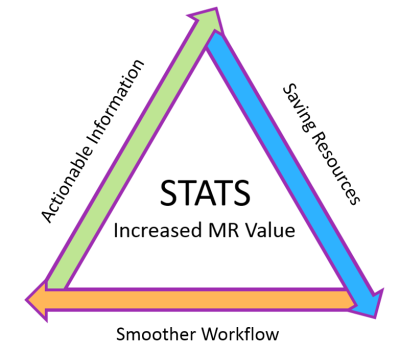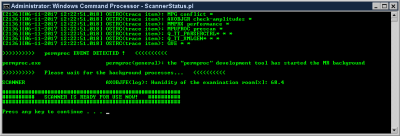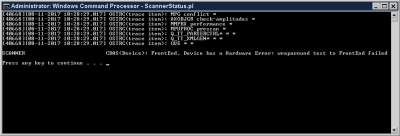2631
Scanner Status Tool (STATS): towards increasing the value of MR1Clinical Science, Philips, Nashville, TN, United States
Synopsis
Scanner Status tool (STATS) is a light Perl-based script that runs on the MR scanner's Host computer and picks up critical information about the status of the background processes and informs users when everything is OK or when there is an error detected so they could subsequently take an informed action. This will result in a smoother workflow, reduction in wasted time, promotion of First Time Right imaging, and increased value of MR.
Introduction
First Time Right strategy in MR imaging is an important pillar of any robust diagnostic imaging philosophy. In this framework, the aim is to develop fast and consistent, patient friendly, and user intuitive solutions. Solutions that improves the workflow by providing intuitive information for the users. In this abstract we discuss Scanner sTATuS tool (STATS) which provides important information about the MR scanner's current status to the average user. Risks of not knowing the latest actionable information include but not limited to 1) time that is wasted when any scans are attempted pre-maturely prior to availability to all the software in the background 2) money that is wasted when users unnecessarily try to debug the seemingly issue on hand or alert service engineers solely because of not knowing when the scanner software is fully up and ready 3) time and money that is wasted for not being able to precisely detect a hardware issue. STATS enables ordinary users to know when the scanner is fully up and running to start their experiment and when there is a hardware error detected by STATS, it enables users to precisely communicate the error to responsible parties and make informed decisions without wasting time (Figure 1).
Methods
STATS is a new Perl1 programming language script that is added to the 7.0T MR scanner software in R5.1.7 (Philips, Best, the Netherlands). STATS can be executed at any time such as when restarting the system, switching from Classic to MultiX8 mode or vice versa, or when applying a research patch. It captures the communications in the background between the Host computer, Spectrometer, Reconstructor, RF and Gradients amplifiers, Higher Order Shim unit, and other components and displays in a user friendly fashion a selected set of brief statements describing the current status of scanner or existence of certain hardware errors. The user then easily makes an informed decision on precisely what action they need to take to proceed or to alleviate the situation. For example, users are always informed about the exact time when the scanner is up and running after a restart of the system. This also prevents any pre-mature attempts to start the scan and prevents wasting time on chasing false flags. If there are hardware errors, the users will be able to take proper actions in an informed way to resolve the specific issues reported which could result in a faster recovery from the error.
Results
STATS has been successfully used in two platforms: Philips 7.0T Classic mode and Philips 7.0T MultiX8. Only a small subset of relevant events from the many background processes are detected and reported to the user. This provides only the minimum critical pieces of actionable intelligence and significantly reduces the overload of information or analyzing the information on the fly which results in a smoother workflow, saving time, and promotion of First Time Right imaging.
Eventually, as shown in Figure 2, the user is prompted once the background MR processes are finished successfully indicating that the scanner is ready to use. Figure 3 shows an example of STATS detecting a device hardware error and alerting the user accordingly.
Acknowledgements
The author would like to thank Charles Nockowski and Dr. David Higgins for their insights.References
1. Christiansen, Tom, brian d foy, Larry Wall, and Jon Orwant. Programming Perl, Fourth Edition. Sebastopol: O’Reilly, 2012. Print.
Figures


